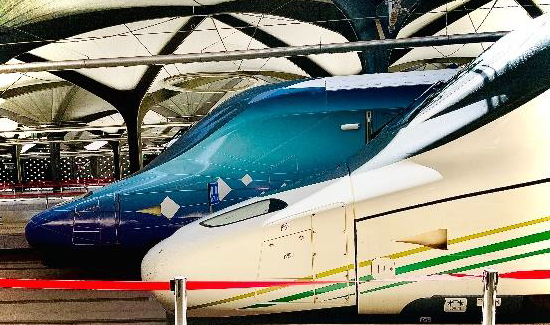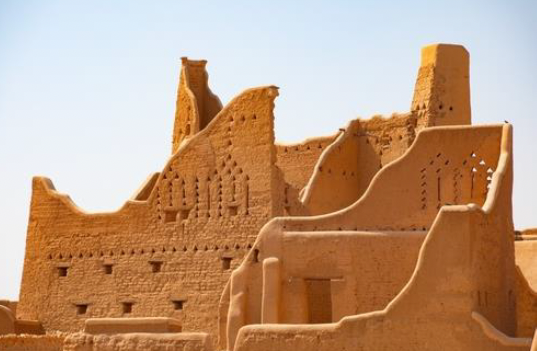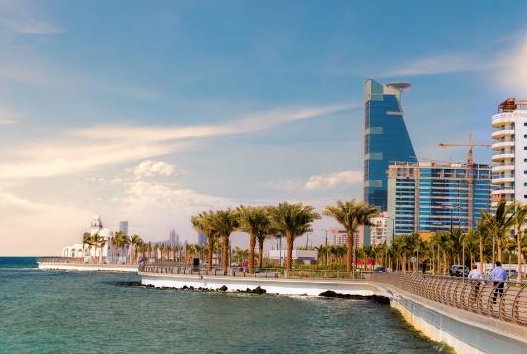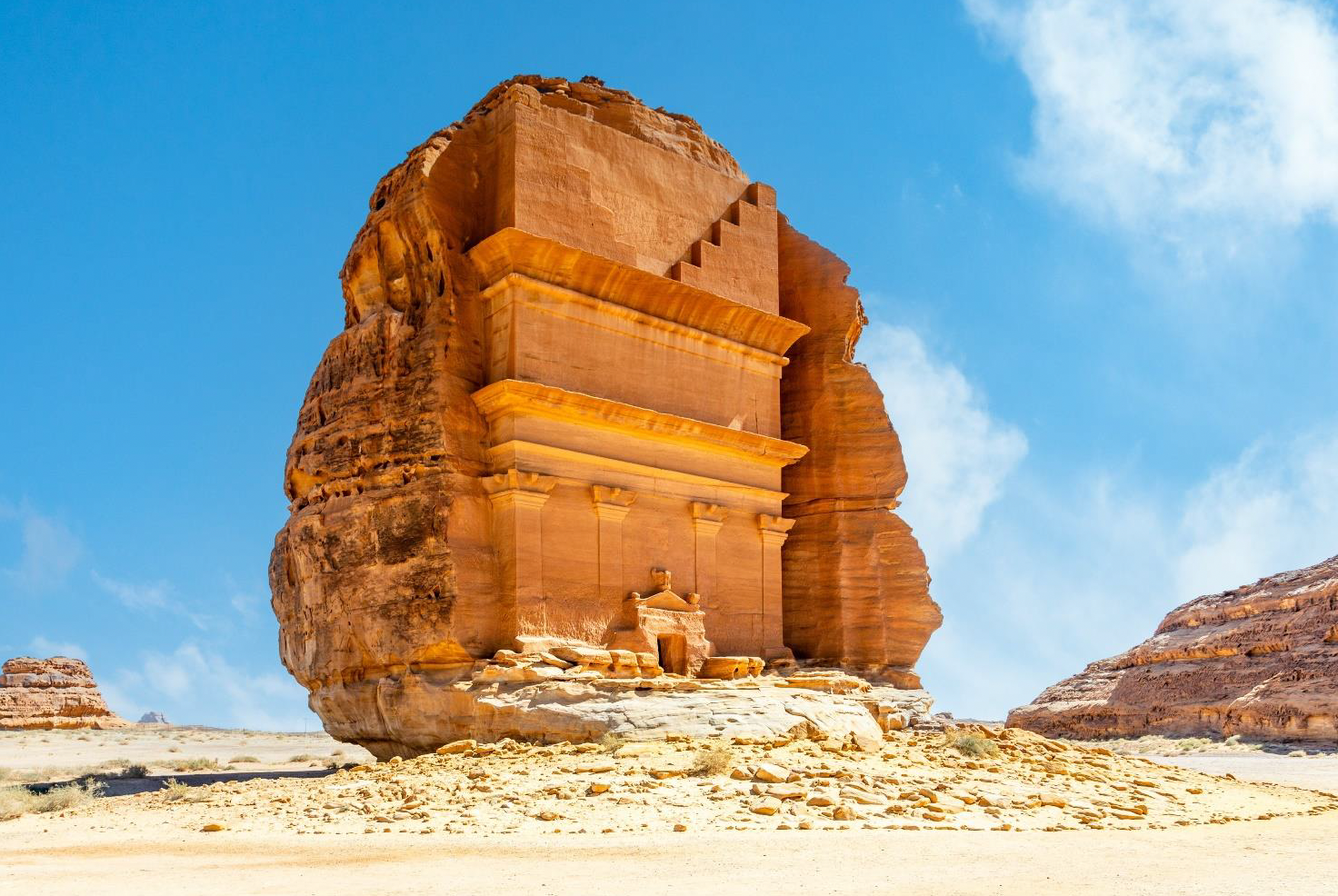Secrets of Saudi Arabia
this fully escorted 4 star tour of Saudi Arabia gives you all the highlights in air-conditioned comfort with english speaking guides, and predominantly Australians and British on the tours.
Description
6 Departures in 2025 being loaded online soon.
2026 open to book soon.
PRICING BEING LOADED SOON. Contact us for details.
The winds of change are blowing through Saudi Arabia, which only recently opened to non-pilgrims. Discover ancient fortresses, camel markets and UNESCO World Heritage Sites in its vast deserts, then experience the cosmopolitan comforts of its cities and high-speed Haramain Railway bullet trains.
CLASSIC TOUR INCLUSIONS:
The only things you may have to pay for are personal expenditures e.g., drinks, optional excursions or shows, insurance of any kind, customary tipping, meals not included, early check in or late check out and other items not specified on the itinerary. The itinerary and pricing shown is from AUSTRALIA and includes return economy flights.
|
| Day 6: | Ha’il & Jubbah | Meals: B, L, D |
| Explore the historical treasures of Ha’il. Stop for a photo at the formidable Qishlah Fortress before driving through the red sands of the Great Nafud Desert to visit the UNESCO World Heritage Site of Jubbah. Discover its rich variety of rock art dating back some ten thousand years, with petroglyphs depicting camels, archers, chariots, kings and more.
Enjoy a refreshing lunch beneath the date palm trees of a local farm. Once sated, continue to your accommodation in AlUla, home for the next two nights. Please note that this drive takes approximately five hours, plus comfort breaks. This evening, stop to enjoy sunset at Elephant Rock, a monolithic sandstone formation standing 52 metres high. Its distinctive trunk and body were shaped by millennia of weather erosion. As the sun sets, the sandstone turns a beautiful shade of red. Please note the rock-art sites at Jubbah are spread out and require you to walk between them. Accessing some of the rock-art sites requires walking up as many as 70 steps via steel walkways and may be difficult for anyone with mobility challenges. |
||
| Destination Information | ||
| Qishlah Fortress – Built in the late 19th century, this imposing structure stands as a testament to the region’s history.
The Nafud Desert – The Nafud is a huge desert in the northern part of the Arabian peninsula. Its brick-red sands have borne witness to ancient trade routes and nomadic migrations throughout history. Jubbah – A captivating gallery of prehistoric petroglyphs, dating back thousands of years. These ancient carvings are a vivid tableau of the region’s cultural and natural history, showing hunting scenes, wildlife and symbolic motifs |
| Day 7: | AlUla & Hegra | Meals: B, L, D |
| Explore the wonders of AlUla, once a crossroads of ancient civilisations. The region offered rest for merchants on the historic caravan routes between Egypt and Arabia. Begin with an exploration of AlUla’s atmospheric Old Town. Wander through its labyrinth of narrow streets, mudbrick houses, and imposing fort, and feel the vivid history of a once-thriving settlement along ancient incense routes.
Later, join a two-hour ‘hop-on’ coach tour of Hegra, formerly known as Madain Saleh. Founded by the Nabateans in the first century AD, Hegra was functionally the southern capital of the same nomads who built Petra in Jordan. Marvel at the grandeur of the site’s rock-hewn tombs, dating back two thousand years. Dozens of well-preserved tombs stand amid the stunning desert landscape, carved into its dramatic cliffs and rock formations. Please note: The Royal Commission restricts independent visits to the Hegra site. Touring here is strictly on a shared hop-on, hop-off coach basis, with rawis (storytellers) at each site. |
||
| Destination Information | ||
| AlUla – AlUla is a historic and enchanting oasis in northwestern Saudi Arabia, surrounded by impressive sandstone mountains. Rich in archaeological wonders, its ancient tombs, rock art and historic structure evoke a timeless allure.
Hegra (Madein Saleh) – This UNESCO-listed archaeological marvel is the Saudi answer to Petra. Established by the Nabateans in the first century, it was built to protect the Nabateans’ long-distance caravans, which brought precious goods from southern Arabia to Petra in Jordan. It is famous for its beautiful tombs and monumental structures, carved into the rose-red cliffs. |
||
| Day 8: | Medina & Bullet Train to Jeddah | Meals: B, L, D |
| Spend the morning driving approximately 4 hours through a landscape of desert and mountains to reach Medina, the second holiest city in Islam. While non-Muslims cannot enter the mosques, visitors can now explore some of the previously forbidden central areas. See the battlefield site of Jabal Uhud and admire the façade of the mosque where Islam’s Last Prophet, Muhammad, is buried.
Visit the attractive Ottoman railway station and see the Hijaz Railway memorabilia. Finally, experience the sleek Haramain Railway. Board the bullet train from Medina to the vibrant city of Jeddah on the shores of the Red Sea. This modern, air-conditioned train travels at 186 mph, covering the 260 miles (approximately 419kms) to Jeddah in less than two hours. Check in to your hotel in Jeddah before dinner. |
| Destination Information | ||
| Medina – As the second most sacred city in Islam after Mecca, Medina’s very streets exude a spiritual ambience. Previously off-limits to non-Muslims, the heart of the city has now been opened up to all visitors, with the exclusion of the mosques themselves. Please note that conservative dress such as an abaya (cloak) is still required in Medina, including a hair covering for women.
Haramain High-Speed Railway – The high-speed railway was launched in 2018 to link Medina, Jeddah and Mecca. The modern, air-conditioned trains travel at an average speed of 186mph. Travellers are permitted one suitcase up to 66x55x35cm, plus one small bag. Travellers will need to pass through security before boarding. |
||
| Day 9: | Jeddah | Meals: B, L, D |
| Known as ‘the Bride of the Red Sea’, the coastal city of Jeddah has been the port for Mecca for centuries. Begin at the House of Islamic Art, home to a vast collection of beautiful artistic pieces. Later, take a drive along the spectacular Corniche and admire the gleaming façade of the Floating Mosque, built on stilts over the waves of the Red Sea.
This afternoon, discover Jeddah’s UNESCO-listed Old Quarter, Al Balad, home to ornate houses built of coral stone. Look out for the beautiful Roshan-style bay windows, overlaid with intricate wooden latticework. Finally, settle down for a farewell dinner with a local host and enjoy an insight into modern family dynamics in Jeddah. Your host, a female entrepreneur, will be pleased to talk about her life as a Saudi businesswoman after dinner. |
||
| Destination Information | ||
| Jeddah – This ancient city was originally a trading port on the Red Sea, later serving as a gateway for pilgrims on their way to Mecca. It is a city of contrasts, fronted by a gleaming, manicured Corniche along with the charming historic quarter of Al Balad.
House of Islamic Art – This recently-opened museum is home to six halls, showcasing Islamic arts and crafts from a variety of countries. Exhibits range from elegant calligraphy and extravagant manuscripts to sumptuous textiles and ceramics. Al Balad Quarter – Jeddah’s Old Quarter, Al Balad, is another of Saudi Arabia’s many UNESCO World Heritage Sites. It is celebrated for its coral-built homes, decorated with elaborate wooden balconies and intricate window covers. Its warren of atmospheric streets are a delight to explore on foot. |
||
| Day 10-11: | Departure | Meals: B |
| Transfer to the airport in accordance with the time of your onward flight. Should you wish, this tour can usually be combined with a departure of our popular Journey through Jordan tour – please ask your reservations consultant for details. |
Additional information
| Departure Date | 30Oct25, 6Nov25, 29Jan26, 5Feb26 |
|---|





